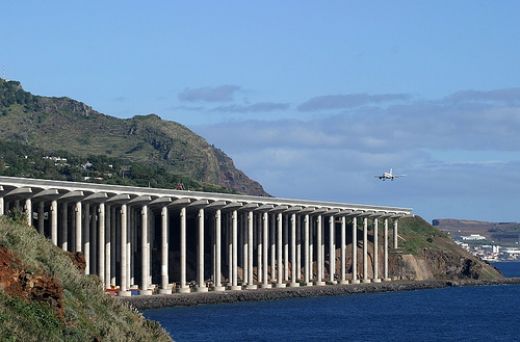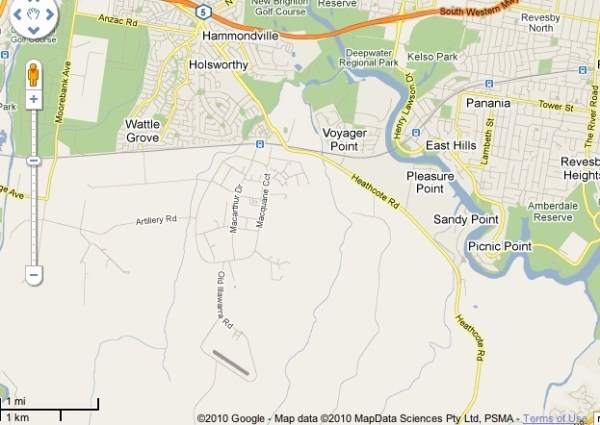Brett Godfrey has started some soul searching as well as airport site searching with his suggestion that a new single super sized Sydney Airport be considered for solving its airport crisis, rather than a 2nd airport.
The soul searching element is Badgery’s Creek. The site exists. The ready means to link it to the city rail network and to the motorway network exist. But the political will to build it doesn’t exist.
If Badgery’s Creek was built it could provide as a single runway operation at least 40 movements an hour in addition to the maximum of 80 landings or takeoffs permitted at Sydney Airport.
It would also be used. Badgery’s Creek is now a more convenient airport site for substantial numbers of business and leisure travellers in terms of access times. Improving its motorway and rail links involves comparatively little in the way of project costs while delivering wider community benefits.
But if we assume it is DEAD as an option, and that the fate of the site is just to add to the sprawl of poorly serviced real estate developments, with none of the airport related improvements to transport services, where might a super Sydney airport be built?
Most likely in the southern highlands. This is where the options extend from very close to Bowral and Moss Vale (the Don Bradman International Airport option) or the wilder and emptier parts of Canyonleigh-Belangalo-Wells Creek (the Ivan Milat International Airport option) or way down near either Marulan or Goulburn.
These can make partial sense if the southern highlands is turned into a massive development corridor which includes provision for a high speed rail corridor which links into the airport.
The partial nonsense of such a solution is that even at a sprint run at 380 kmh and some very serious trackwork, the total trip times to access any of those options from the main CBD and a large part of the Sydney basin will wipe out the city as a convenient and cost competitive place to do business.
In short, we can bankrupt the national public purse in pursuit of a failed program, or just end up with a super remote Sydney airport which solves nothing, is served by buses, and gets a few flights a day.
The task force examining potential sites is also looking at the central coast. It may therefore be contemplating solving some of the topographical issues using the same construction techniques used to extend a runway to large jet standards at the Madeira Airport.

That technique, which resulted in a structure wide enough to carry not just the runway but the taxiways and meet all of the international safety standards for modern jets, is also applicable to the canyon crossed site that exists south of Holsworthy and its army base, and in general terms, between Campbelltown and Lucas Heights.
With similar engineering techniques to Madeira, but on a larger scale, there is space for a super Sydney Airport in this Holsworthy South zone. The suburban airport line already serves Holsworthy station, and a spur line could be extended south into the terminal area and there are reasonable opportunities to set up a fast rail shuttle to the main CBD and also built new rail links to Strathfield or Parramatta to improve total network connectivity.

The advantage of a Holsworthy site is that it can provide rapid access to many parts of Sydney for far less cost and over a much shorter trip time than any of the southern highlands options.
Another option to super size a new Sydney Airport is to do it very near to it, by building a satellite runway on the southern shores of Botany Bay, most likely somewhere between the eastern side of Towra Point and the desalination plant further east in Kurnell.
This is the location of the long proposed Bill Bradfield IAC group project which would see the linking of the Cronulla-Sutherland peninsula to the La Perouse-Botany area in order to transfer passengers between the satellite runway and the main airport, but with substantial surface transport and developmental consequences for the south east and eastern suburbs.
In fact the Bradfield plan could result in the greatest boost to the overall development of the greater Sydney area since the Harbour Bridge (for which his father JJ Bradfield was the chief engineer) linked Milson’s and Miller’s points.
Godfrey has given those involved in the search for a Sydney airport solution much to think about.
But will anything useful or practicable be done before inaction results in serious harm to Sydney as a place to do business, to live and work, or to visit?







Crikey is committed to hosting lively discussions. Help us keep the conversation useful, interesting and welcoming. We aim to publish comments quickly in the interest of promoting robust conversation, but we’re a small team and we deploy filters to protect against legal risk. Occasionally your comment may be held up while we review, but we’re working as fast as we can to keep the conversation rolling.
The Crikey comment section is members-only content. Please subscribe to leave a comment.
The Crikey comment section is members-only content. Please login to leave a comment.